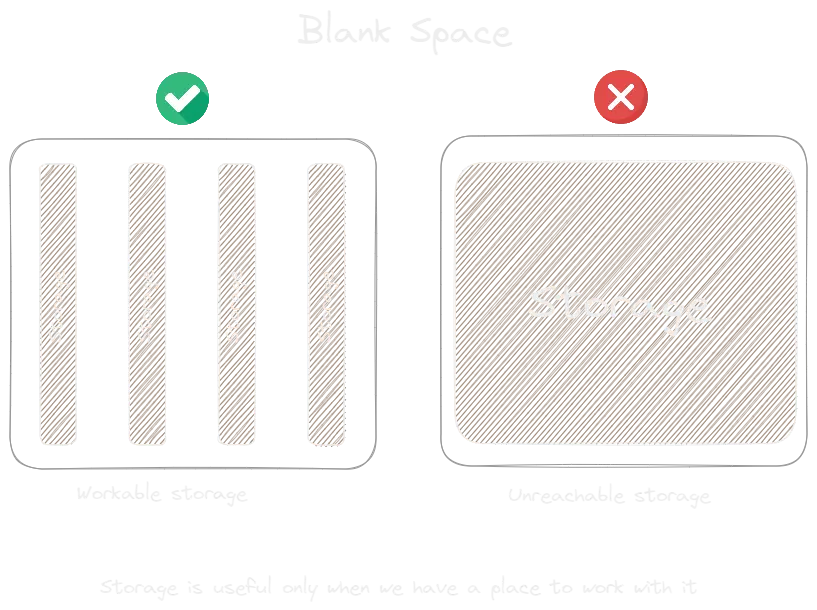Blank Space
Notes
When we try to organize spaces, whether in our office, our life or our minds Environmental design, we often confuse our desire for order for order's sake, instead of usability form vs essence.
A common example is "Tetris" vs "Tool wall" Tetris:
- Arranged by size/shape
- Maximizes use of surface Tool wall:
- Arranged by usability, frequency, especially for things that are used together
- Relies on accessibility, to make sure each tool is accessible with minimal movement of other layers of tools.
Tool wall reduces maintenance cost at the price of set up costs Upfront costs. It takes into account that human use of storage requires empty Space, meaning that there should be space between layers and different stacks, to avoid having to rearrange after every visit, making the daily usage very uncomfortable. While Tetris looks organized, it is very difficult to work with, it functions more as a work of art rather than comfort.
Therefore storage spaces must have an empty space, this free space is essential to the manipulation, processing and arrangement of all the rest of the items. it provides flexibility, precisely because it is empty. Working Memory. For example, a warehouse without a white space would have to take out all the blocking boxes before they can get to the right one, which makes it very inefficient. Similarly, a time to relax, of "unproductivity", to process your thoughts when your Downtime brain is activated can be considered a blank space.
In Japanese, this is known as "Yohaku no bi" -the beauty of empty space.
This is true also to time and energy. When planning your day, it's important to include Buffers because an air-tight schedule won't leave room for changes if necessary, or energy to be effective during those times.
Visual

Overview
🔼Topic:: Resource management (MOC) 🔼Topic:: Memory, Attention and cognitive load (MOC) ↩️Origin:: 🔗Link::